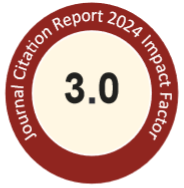Abstract
A sensitive and accurate reversed-phase liquid chromatography coupled with electrospray ionization mass spectrometry (LC-ESI-MS) method for determining glycerophospholipids and a sphingolipid was developed and validated in order to profile and quantify the classes of lipids in the cerebrospinal fluids of patients with three different illnesses. The LC-ESI-MS method was optimized for the analysis, and an Inertsil 6 ODS-3 (4.6 x 150 mm) column was utilized with a mobile phase composed of acetonitrile/methanol/triethylamine in the ratio 550/1000/25 (w/w/w) eluted isocratically at a flow rate of 1.0 mL/min. The results demonstrated that both the accuracy and precision of the intra- and inter-day assays of phosphatidylcholine (PC), phosphatidylethanolamine (PE), phosphatidylinositol (PI), phosphatidylserine (PS) and sphingomyelin (SM) were within acceptable criteria. Clinical application demonstrated that the percentage and content of each class differed in the cerebrospinal fluids of patients with three different illnesses, with the richest lipid components being SM (848 ± 75.5 ng/mL, 40.7% ± 2.2%), PC (8042.5 ± 1214.4 ng/mL, 53.8% ± 4.2%) and PS (2124.2 ± 152.0 ng/mL, 43.3% ± 1.6%), respectively for patients with chordoma, trigeminal neuralgia and Parkinson's disease. It was concluded that this improved method can be used to directly detect glycerophospholipids and a sphingolipid, and applied to detect physiological changes in humans to discover preventive medicines or therapeutic medicines, or develop new drugs.
Recommended Citation
Wu, J.-Y.; Sheu, M.-T.; Lin, J.-W.; Liou, Y.-B.; Chiu, W.-T.; and Ho, H.-O.
(2012)
"Characterization of glycerophospholipids and a sphingolipid in the cerebrospinal fluid of patients with different illnesses by LC-ESI-MS,"
Journal of Food and Drug Analysis: Vol. 20
:
Iss.
1
, Article 16.
Available at: https://doi.org/10.38212/2224-6614.2079

